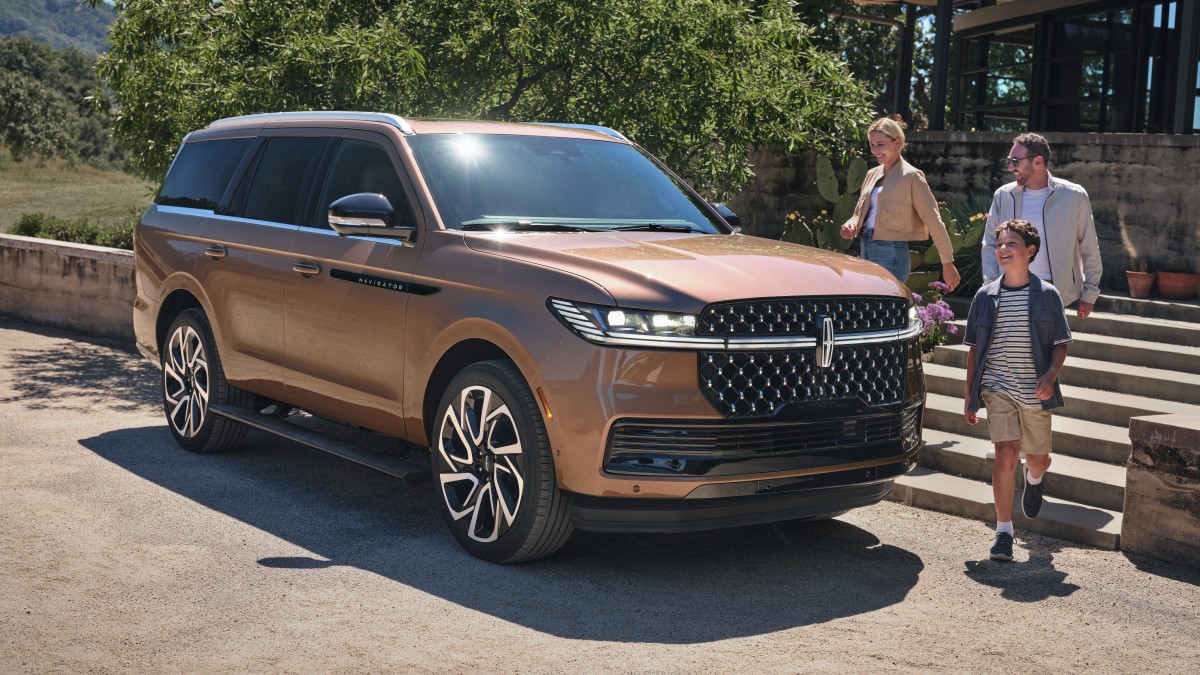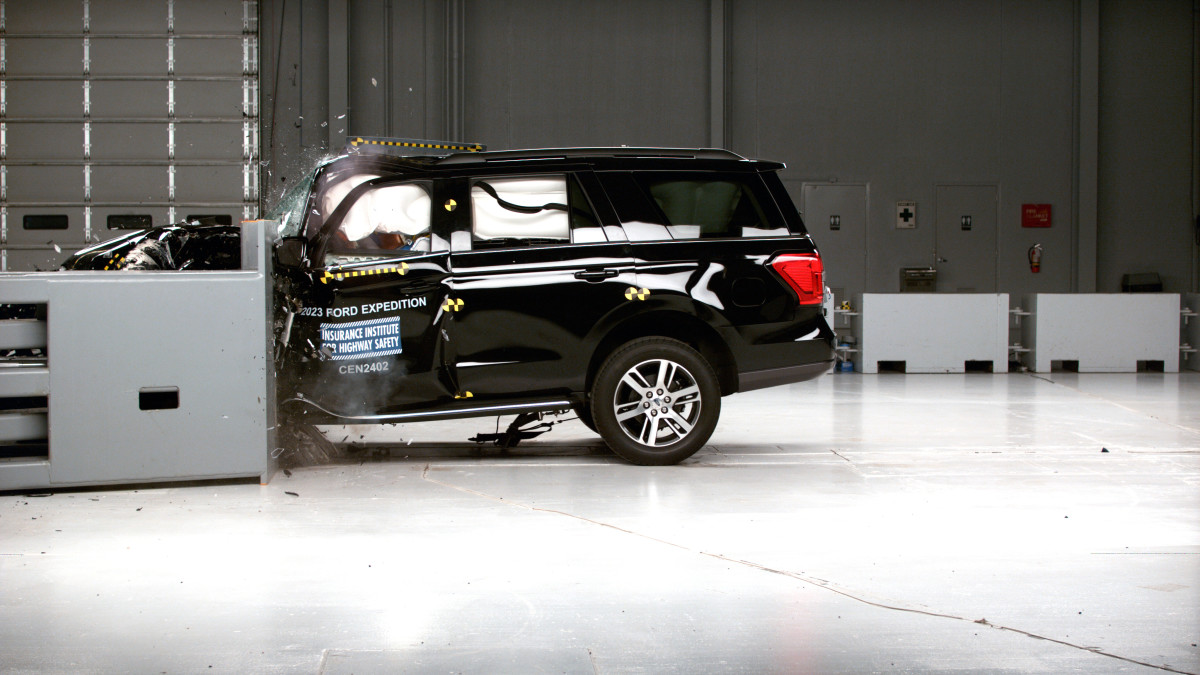
One of the most distinct characteristics of American motorists is the seemingly unconditional embrace of big, gas-guzzling trucks and SUVs.
Originally meant for rugged, heavy-duty work, vehicles like Ford's (F) Expedition, Lincoln Navigator, General Motors' (GM) Chevrolet Tahoe and Suburban, and Stellantis's (STLA) Jeep Wagoneer have become symbols of American suburbia.
These oversized cars are popular as posh and cushy family cars and are prized for their intimidating looks and perceived sense of safety.
Related: Ford CEO says American car buyers need to break this addiction
However, in an appearance at the Aspen Idea Festival a few months ago, Ford CEO Jim Farley warned American consumers that the future of the American auto industry depends on a commitment that may seem "un-American" and ironic, considering the kind of cars that the Blue Oval is known for.
"We have to start to get back in love with smaller vehicles," Farley said. "It's super important for our society and for EV adoption. We are just in love with these monster vehicles, and I love them too, but it's a major issue with weight."
It is also a major issue with safety. Despite its perceived sense of safety for drivers and passengers, recent IIHS test results show that not all the perceived "safe" big cars are safer for families inside. However, a new NHTSA proposal might change big cars for good in consideration of people outside the car.

IIHS
The Feds take action on pedestrian safety
As per the Associated Press, the National Highway Traffic Safety Administration proposed a new rule on September 9 that would set testing and performance requirements to minimize the risk of pedestrian head injuries.
The new rule would require automakers to comply with a new Federal Motor Vehicle Safety Standard. If passed, it will require new passenger vehicles that weigh under 10,000 pounds, including what the agency calls "multipurpose passenger vehicles," such as trucks, SUVs, crossovers, and vans, to be designed to reduce the risk of potentially serious or deadly injuries in child and adult pedestrian crashes.
The NHTSA says that this proposed rule is motivated by the numbers. They note that in 2022, 88% of pedestrian fatalities occurred in single-vehicle crashes. Their data from the same year shows that people who were killed by being hit by the front of a car were most common for multipurpose passenger vehicles, with 49% of deaths, followed by passenger cars like sedans causing 37% of deaths.
Additionally, the United States stands out as a sore thumb among most developed countries where roadway deaths have been declining. According to the NHTSA, pedestrian deaths jumped from 4,779 in 2013 to 7,522 in 2022, an increase of 57%.
“We have a crisis of roadway deaths, and it’s even worse among vulnerable road users like pedestrians,” NHTSA Deputy Administrator Sophie Shulman said in a statement. “This proposed rule will ensure that vehicles will be designed to protect those inside and outside from serious injury or death.”
More Automotive:
- The Toyota Crown is a masterclass in cheap, quiet luxury
- Ford making radical change that might anger loyal consumers
- Gavin Newsom's 'EV mandate' is under U.S. Supreme Court threat
The NHTSA says that the new rulings would standardize a test procedure that would test for pedestrian impact, which it estimates would save at least 67 lives a year.
The test would simulate a head-to-hood impact using human-like head forms to measure the impact. The head forms, or crash test dummies, that the NHTSA proposes to use in testing are said to represent a diverse array of pedestrians, from small children to adults.
The NHTSA says that the proposed rule is intended to comply with a Bipartisan Infrastructure Law directive that aims to match U.S. safety standards with those of the rest of the world.
Ford did not immediately respond to a request for comment on the NHTSA's proposal.
Congressional action has been slow
The NHTSA's action follows Congressional action on August 23, when Rep. Mary Gay Scanlon (D-Pa.) introduced a bill known as the Pedestrian Protection Act to the House floor. The bill would require federal standards for automobile hood height and visibility to protect pedestrians and other vulnerable people using the roadways.
In an interview with NPR, she noted that current automotive safety standards overlook those outside the car.
"We've seen these standards over time improve vehicle safety with a focus on the people in the vehicle," Scanlon told NPR. "But [the bill] would sort of expand that to pedestrians, bicyclists, and people outside the vehicle."
Related: Congress wants to change how SUVs look
Notably, Scanlon mentioned to NPR that she likes "having an SUV," adding that she used to drive a Chevrolet Suburban to transport her kids and their teammates to soccer practice while hauling their gear.
"Having a good size vehicle is helpful," Scanlon told NPR. "But it does appear that there are things we can do with respect to design that would reduce the blind zones on these larger vehicles."
NHTSA's SUV proposals face pushback
It is important to note that the NHTSA has tried new rules regarding this issue before. In 2023, they proposed the idea of pedestrian crashworthiness testing, which would test vehicles for pedestrian impacts.
Their proposed rule would create a pass-fail rating for a pedestrian impact test, the results of which would only be displayed on the NHTSA's website rather than on new cars' window stickers. As a kicker, the program would be entirely voluntary, which could dissuade manufacturers from revealing if their vehicles are safe against pedestrians at all.
In a statement to the AP by auto industry advocates, the Alliance for Automotive Innovation said that the industry has given input to the regulators on pedestrian safety and that they will review the NHTSA proposal. They also added that automakers have already developed crash avoidance technology to make roads safer for pedestrians and others.
In its statement, the NHTSA says it will accept public comment on the proposed rule for 60 days from September 9.
Related: Veteran fund manager sees world of pain coming for stocks







